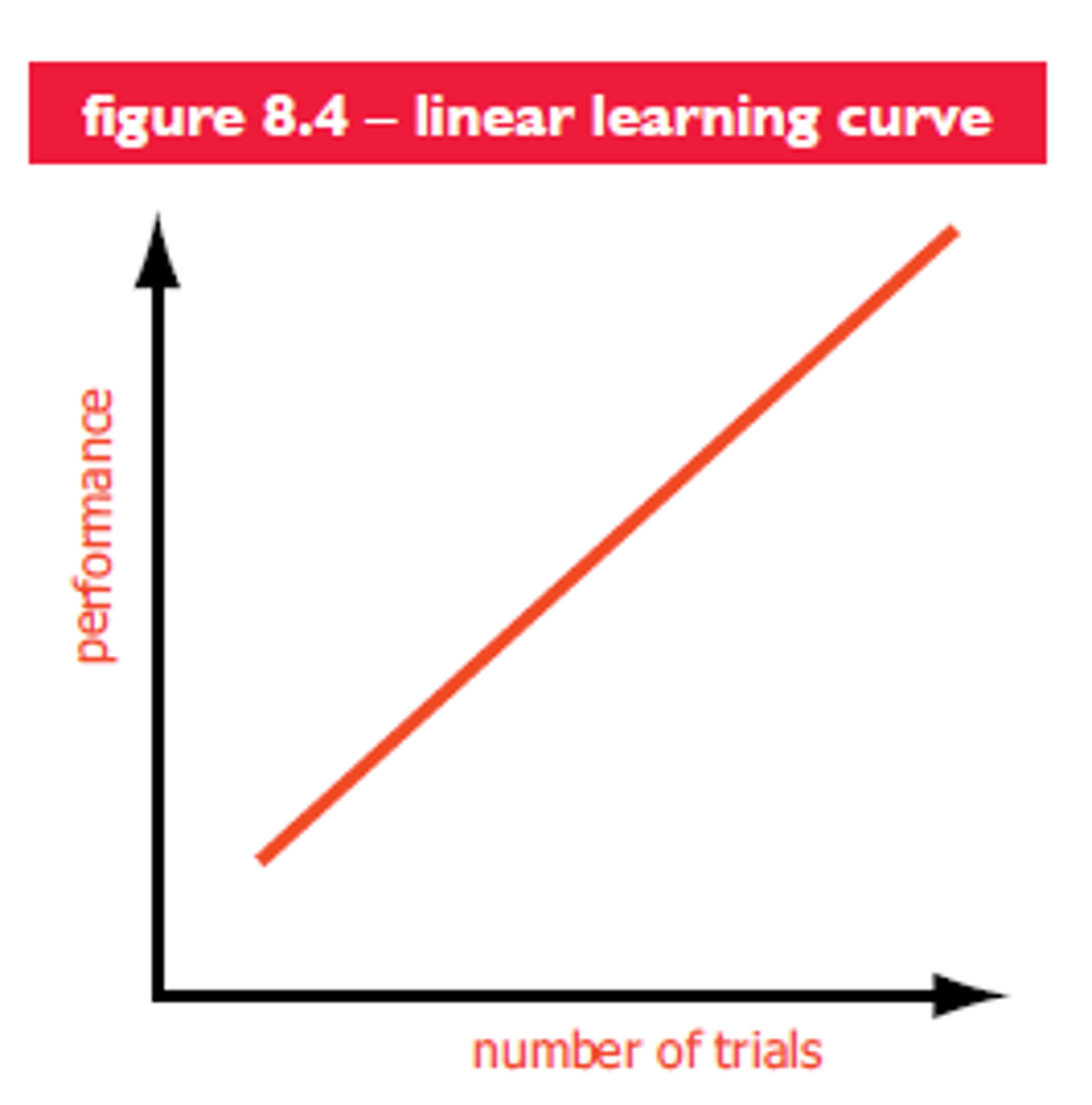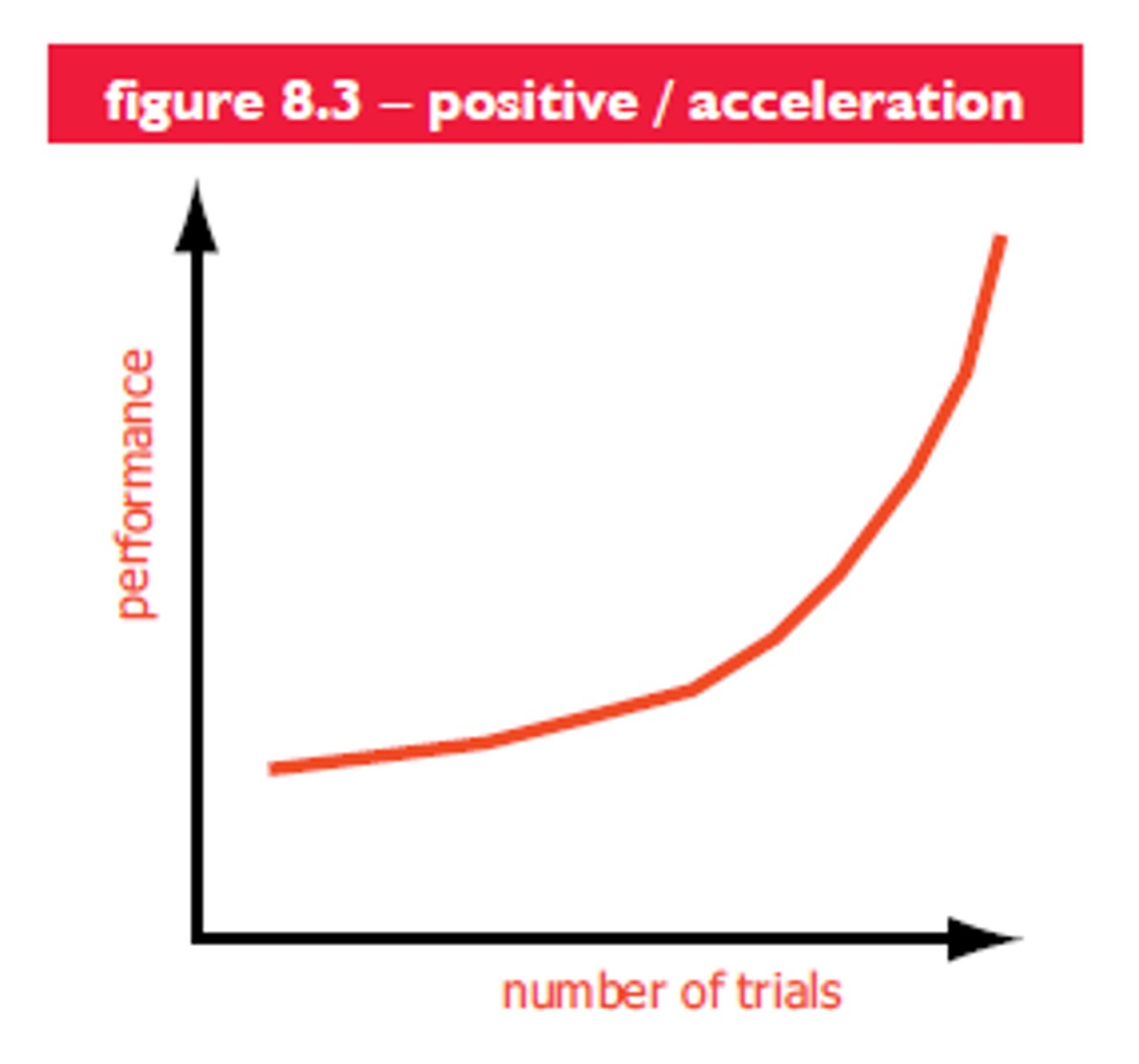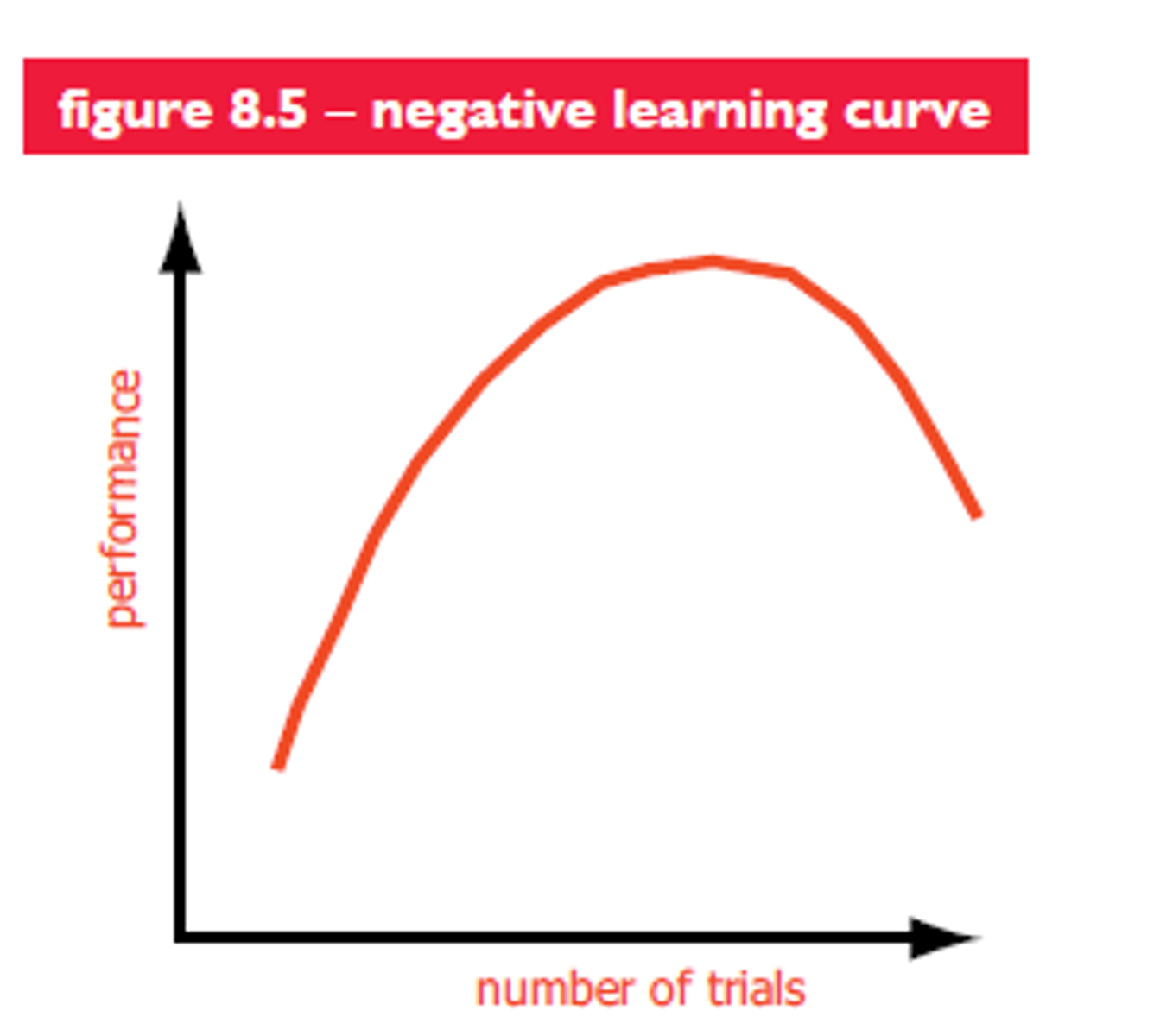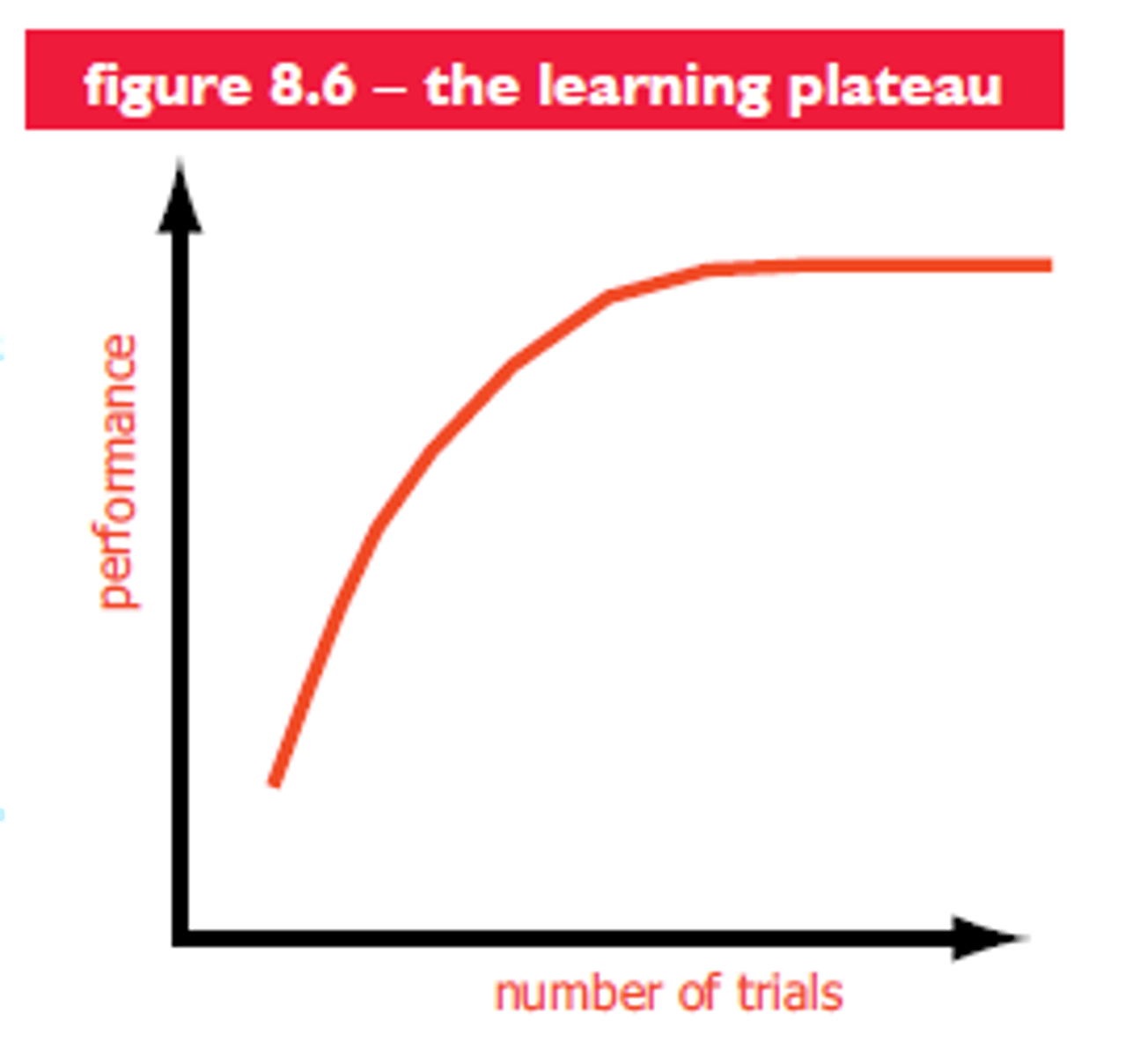SEHS UNIT 5.3 - Principles of Skill Learning
1/44
There's no tags or description
Looks like no tags are added yet.
Name | Mastery | Learn | Test | Matching | Spaced |
|---|
No study sessions yet.
45 Terms
learning
relatively permanent change in performance brought about by experience
performance
temporary occurrence fluctuating (rising/falling) over time
relationship between learning and performance
if performance changes over time it often infers learning has taken place.
what does learning exclude?
changes due to maturation and degeneration
how do we measure learning?
by observing performance
how do we tell that a skill has been learned?
it can be perform with consistency
cognitive phase of learning
is the first stage in learning a new sport. Athletes are often young or new to the sport. A coach teaches primarily through demonstrating and visual learning. By watching skills, the athletes then practice.
motor component of cognitive phase of learning
uncoordinated movement
associative phase of learning
learn by practice (trial and error) in this stage and athletes are expected to make many errors. In order to combat these and teach the performers, there is a large emphasis on feedback from the coach.
feedback during associative phase of learning
must be extrinsic as the performers do not have the knowledge or muscle memory to know if the skill is done correctly. In this stage, the feedback also is primarily knowledge of results.
autonomous phase of learning
the performer succeeds frequently and is highly skilled. The performance is automatic.
different types of learning curves
➢ positive acceleration
➢ negative acceleration
➢ linear
➢ plateau
linear learning curve
➢ learn an easy-to-perform skill
➢ practise is successful and beneficial, ➢ motivation and focus is consistently high
➢ positive coach interaction

positive acceleration curve
➢ learning a skill that is difficult to perform at first.
➢ then reach a point where performance improves more quickly
➢ motivation grows with success

negative acceleration curve
when we learn quickly at first but then slow down.

reasons for negative acceleration
possibly due to:
➢ motivation decrease
➢ physical fatigue
➢ lack of coach input.
plateau
➢ learning is positive and probably fairly quick at first.
➢ then there is a period where there is no improvement in performance.

reasons for plateau
possibly due to:
➢ lack of practice
➢ injury
➢ declining interest
➢ skills not learned correctly
➢ coach is unable to progress performer
➢ skill progression is too complex
what factors contribute to rate of learning?
➢ physical maturation
➢ physical fitness
➢ individual differences of coaches
➢ age
➢ difficulty of task
➢ teaching environment
➢ motivation
define the concept of transfer
the influence of learning or performance of one skill on the learning or performance of another.
positive transfer
learning of one skill helps with the learning of another
negative transfer
learning of one skill hinders (makes harder) the learning of another
types of transfer
➢ skill to skill
➢ practice to performance
➢ abilities to skills
➢ bilateral
➢ stage to stage
➢ principles to skills
skill to skill transfer
learning one skill and being able to transfer that skill into a different skill.
eg. throwing a ball to throwing a javelin
practice to performance transfer
transferring skills learnt in training into a game situation.
eg. batting in baseball against a pitching machine
abilities to skills transfer
A performer uses their own abilities ( component of fitness) to perform a skill.
eg. improving dynamic strength in order to start races better
bilateral transfer
transfer of learning that occurs between two limbs.
eg. a footballer who can pass with their right foot having previously learned with their left foot
stage to stage transfer
skills learnt in the cognitive phase further developed in the associative phase, and associative to autonomous phase.
eg. three-on-three basketball to the full game
principles to skill transfer
concepts from sports can be transferred into other games.
eg. defending in basketball to netball.
practice
essential to acquiring motor skills
types of practice
➢ distributed
➢ massed
➢ fixed (drill)
➢ variable
➢ mental
distributed practice
intervals are planned within the training to allow for rest and mental rehearsal.
massed practice
continuous training with no rest.
fixed practice (drills)
repeatedly practicing a particular skill, usually in a closed environment to allow for skill development.
variable practice
training where the demands placed on the performance of a skill are altered. The skill remains the same, but the environment alters to help replicate match play.
mental practice
preparation for a skill without actually doing the skill. Cognitive phase – mental rehearsal to assist with learning a skill. Autonomous phase – mental preparation to ensure consistency and block out other distractions
types of presentation
➢ whole
➢ whole-part-whole
➢ progressive part
➢ part
whole presentation
the movement is presented in its entirety and practiced in its entirety.
whole-part-whole presentation
the whole skill is presented and practiced. It is then broken down into parts, focusing on any issues before putting into a whole skill again.
progressive part presentation
the skill is broken down into parts from the start. The parts are learned and gradually progressed to form different/more complex parts.
part presentation
skill is broken down into parts and learned in isolation, forming subroutines that can later be pieced together.
different teaching styles
➢ command
➢ reciprocal
➢ problem-solving
command style
the coach is in charge, selecting the content for the session as well as the methods of practice and training.
Authoritarian approach so the performer doesn’t have a say, therefore doesn’t develop any independent thinking skills.
Can be useful if coaching beginners or if the session could become dangerous if the protocol isn’t followed (throwing events in athletics)
reciprocal style
also called peer-coaching. The coach sets the agenda, but allowing the performer(s) to offer their own advice/opinion and work together. This helps the performers self image, confidence, communication and leadership skills.
problem-solving style
the coach sets a problem or task and lets the learner work out the solution for themselves.
This approach can be effective when you have time to explore a skill. If there are time restraints on when the skills need to be learned by then this method would not be used.